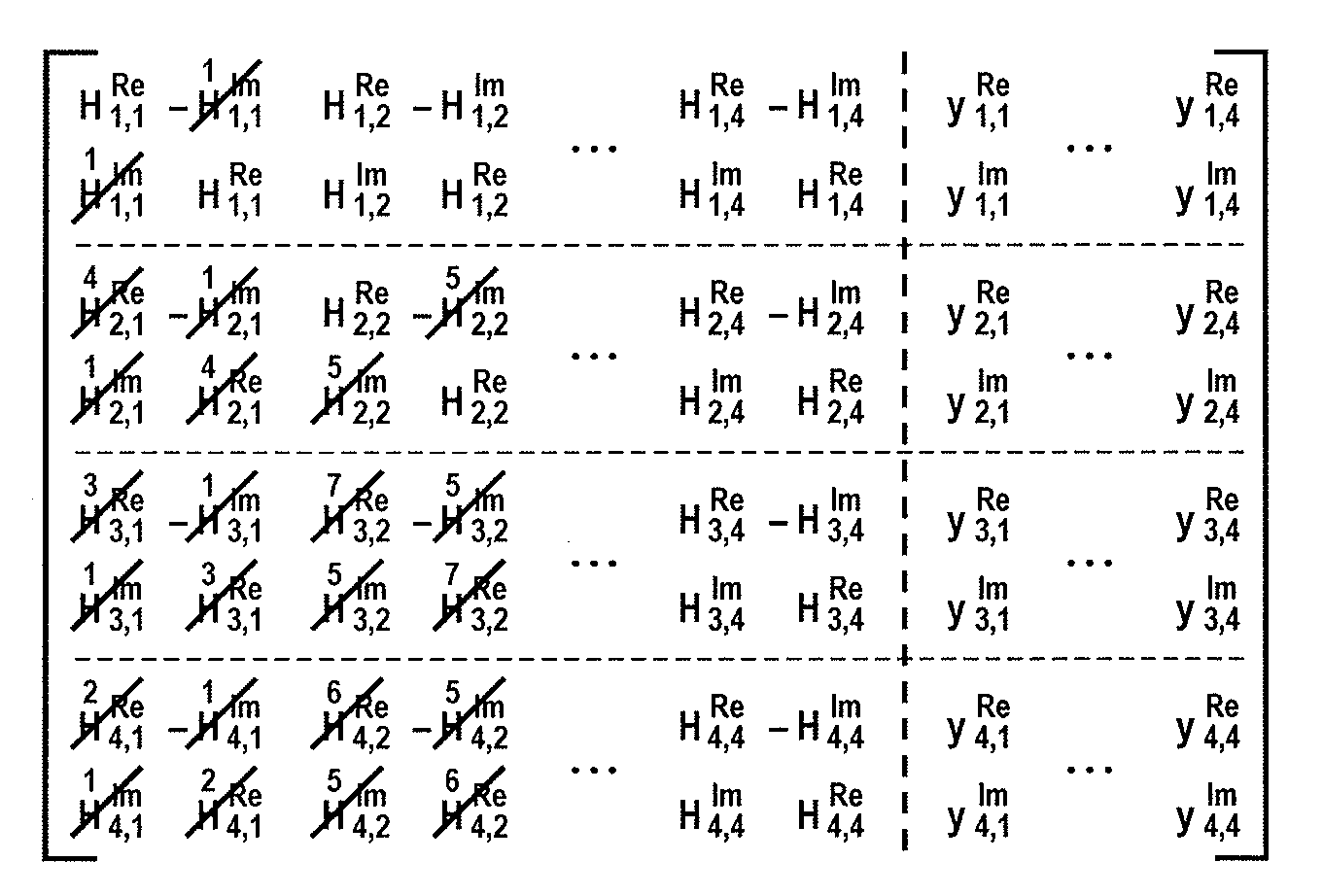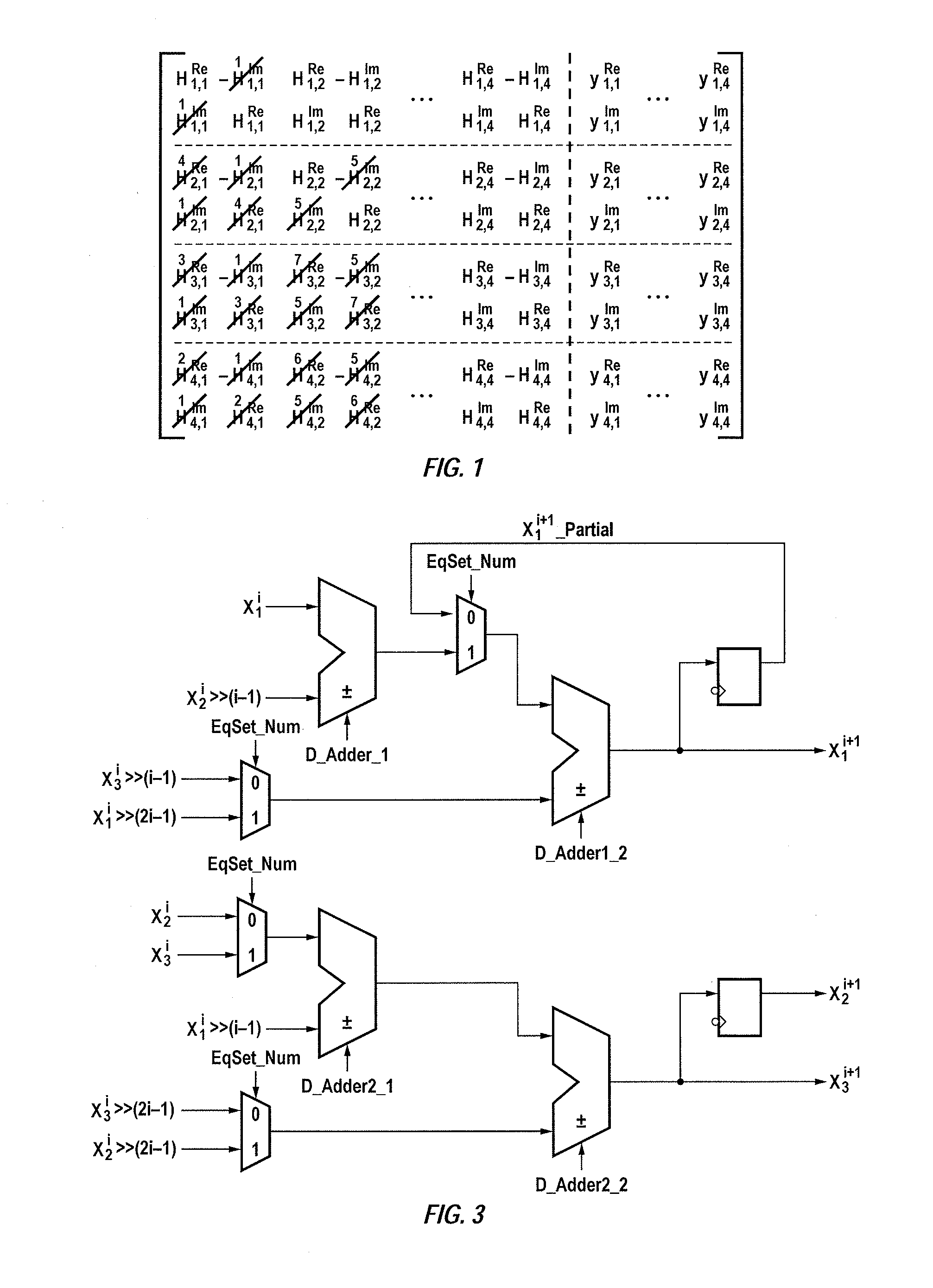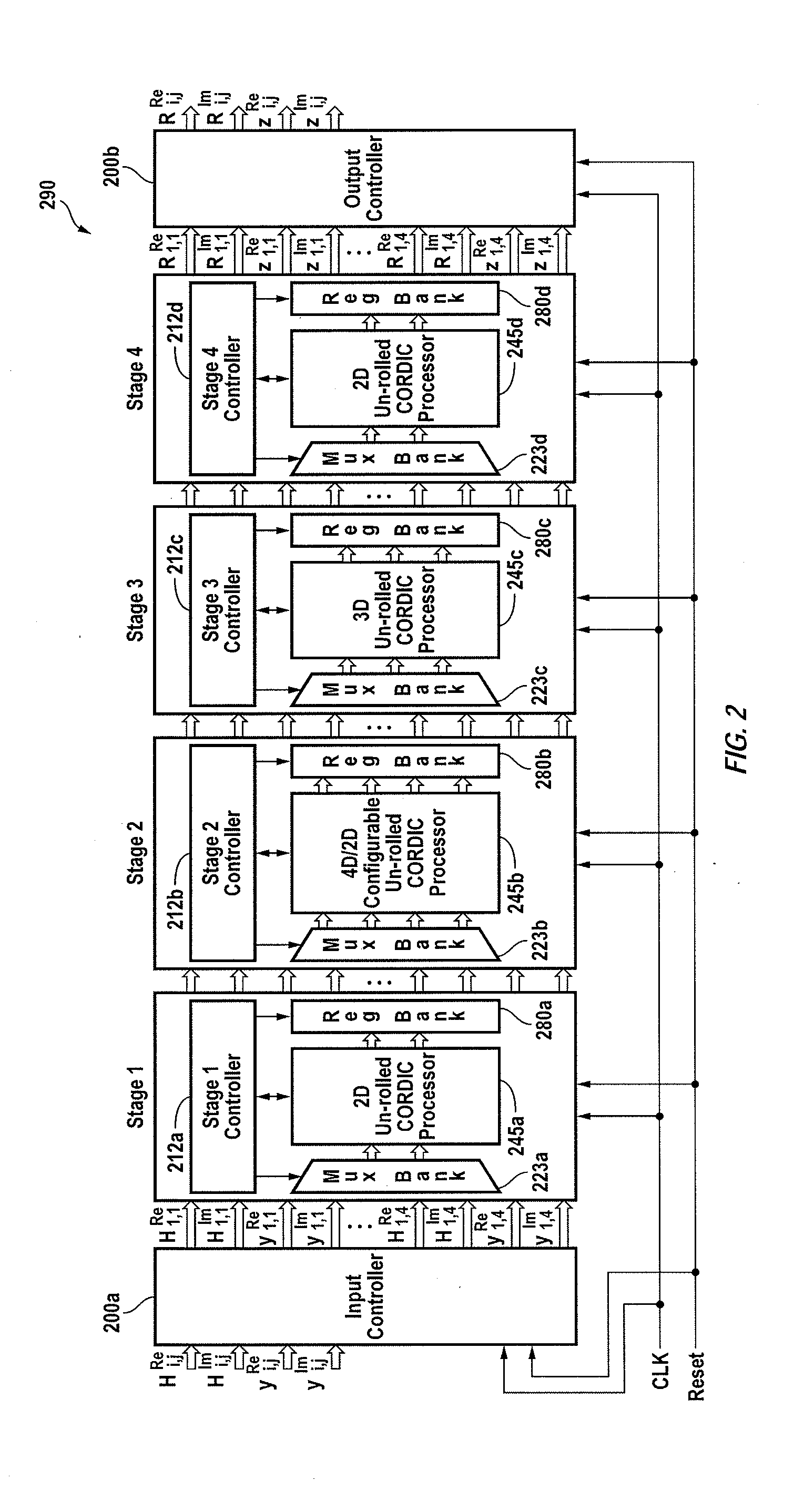Signal processing block for a receiver in wireless communication
a signal processing block and receiver technology, applied in the direction of digital data processing details, independent non-interfering antenna combinations, instruments, etc., can solve the problems of high computational complexity, large core area or low throughput, and the development of low-complexity mimo receivers and related signal processing blocks
- Summary
- Abstract
- Description
- Claims
- Application Information
AI Technical Summary
Benefits of technology
Problems solved by technology
Method used
Image
Examples
Embodiment Construction
[0061]The following description is presented to enable a person skilled in the art to make and use the invention, and is provided in the context of a particular application and its requirements. Various modifications to the disclosed embodiments will be readily apparent to those skilled in the art, and the general principles defined herein may be applied to other embodiments and applications without departing from the scope of the invention. Thus, the present invention is not intended to be limited to the embodiments disclosed, but is to be accorded the widest scope consistent with the principles and features disclosed herein.
[0062]Before describing in detail embodiments that are in accordance with the present invention, it should be noted that the figures are for ease of explanation of the basic teachings of the present invention only. The figures being block diagrams or circuit diagrams provide only the concept of the preferred embodiment of the invention. Further, the exact circu...
PUM
 Login to View More
Login to View More Abstract
Description
Claims
Application Information
 Login to View More
Login to View More - R&D
- Intellectual Property
- Life Sciences
- Materials
- Tech Scout
- Unparalleled Data Quality
- Higher Quality Content
- 60% Fewer Hallucinations
Browse by: Latest US Patents, China's latest patents, Technical Efficacy Thesaurus, Application Domain, Technology Topic, Popular Technical Reports.
© 2025 PatSnap. All rights reserved.Legal|Privacy policy|Modern Slavery Act Transparency Statement|Sitemap|About US| Contact US: help@patsnap.com



